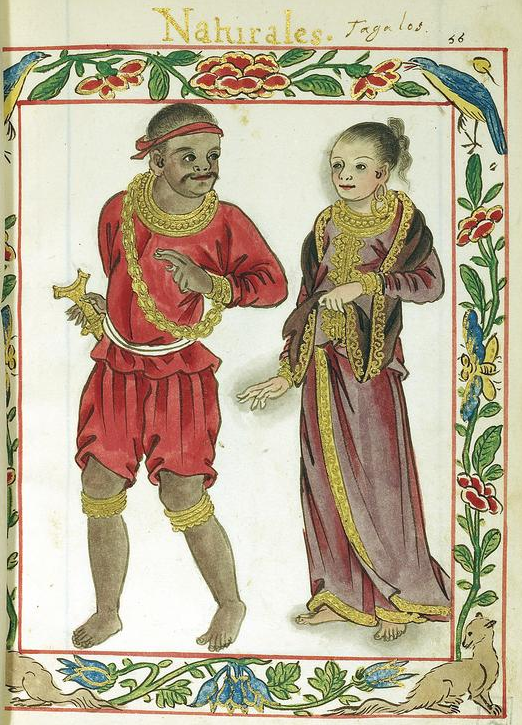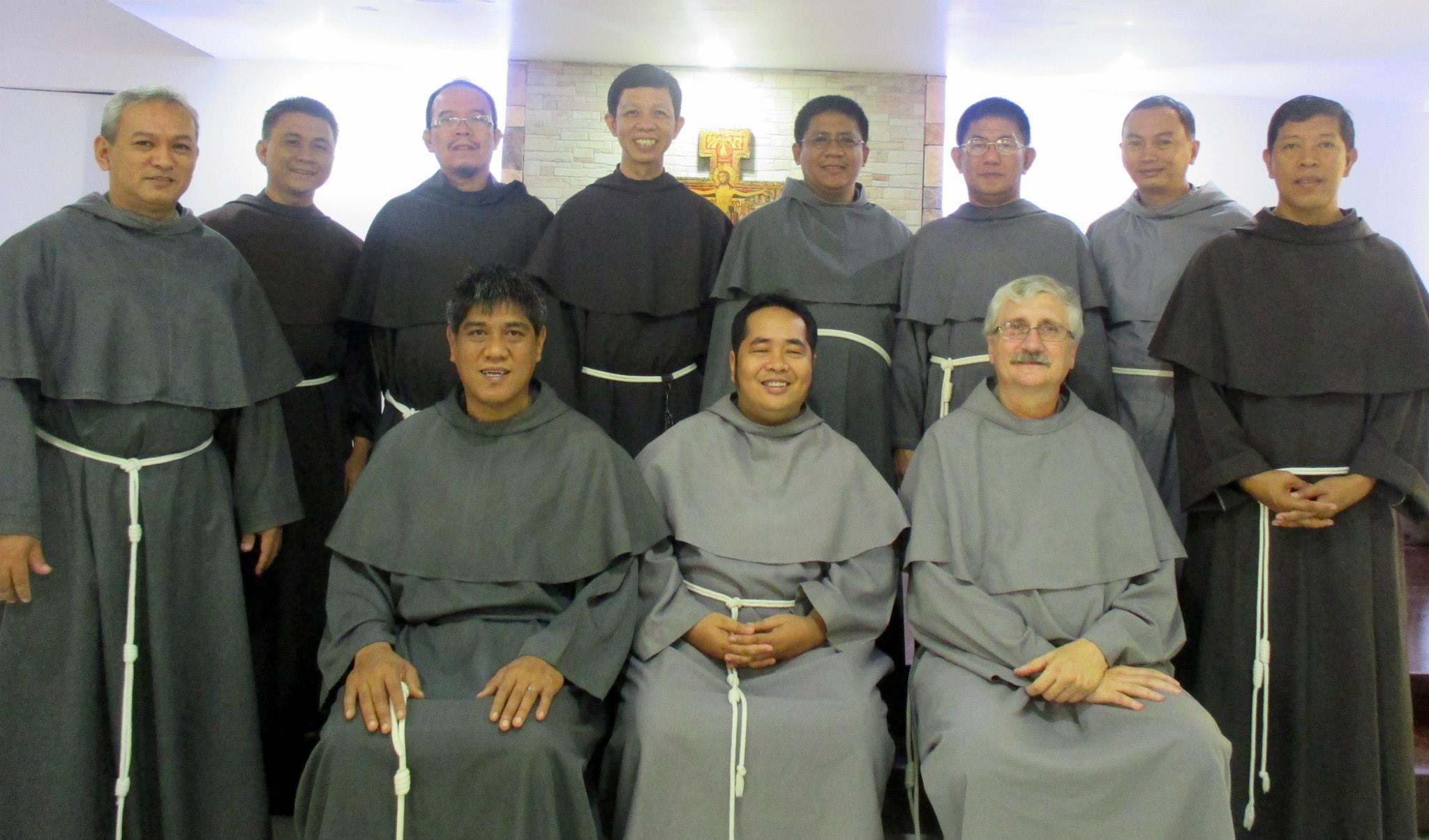|
Maharlika
The ''maharlika'' (Baybayin pre-virama: ᜋᜑᜎᜒᜃ meaning freeman or freedman) were the feudal warrior class in ancient Tagalog society in Luzon, the Philippines. They belonged to the lower nobility class similar to the ''timawa'' of the Visayan people. In modern Filipino, however, the word has come to refer to aristocrats or to royal nobility, which was actually restricted to the hereditary ''maginoo'' class. Overview The ''maharlika'' were a martial class of freemen. Like the ''timawa'', they were free vassals of their ''datu'' who were exempt from taxes and tribute but were required to provide military service. In times of war, the ''maharlika'' were obligated to provide and prepare weapons at their own expense and answer the summons of the ''datu'', wherever and whenever that might be, in exchange for a share in the war spoils (''ganima''). They accompanied their ruler in battles as comrades-at-arms and were always given a share. 1/5 of the spoils goes to the Gino ... [...More Info...] [...Related Items...] OR: [Wikipedia] [Google] [Baidu] |
Maginoo
The Tagalog ''maginoo'', the Kapampangan ''ginu'', and the Visayan ''tumao'' were the nobility social class among various cultures of the pre-colonial Philippines. Among the Visayans, the ''tumao'' were further distinguished from the immediate royal families, the ''kadatuan''. Tagalog The Pilipino had a three-class social structure consisting of the ''maginoo'' (royalty), the '' maharlika'' (''lit.'' freemen; warrior nobility), and the '' alipin'' ( serfs and slaves). Only those who could claim royal descent were included in the ''maginoo'' class. Their prominence depended on the fame of their ancestors (''bansag'') or their wealth and bravery in battle (''lingas''). Generally, the closer a ''maginoo'' lineage was to the royal founder (''puno'') of a lineage (''lalad''), the higher their status. Members of the ''maginoo'' class were referred to as ''Ginoo''. Proper names of the ''maginoo'' nobles were preceded by '' Gat'' (short for " pamagat" or "pamegat", originally meani ... [...More Info...] [...Related Items...] OR: [Wikipedia] [Google] [Baidu] |
Ginoo
The Tagalog ''maginoo'', the Kapampangan ''ginu'', and the Visayan ''tumao'' were the nobility social class among various cultures of the pre-colonial Philippines. Among the Visayans, the ''tumao'' were further distinguished from the immediate royal families, the ''kadatuan''. Tagalog The Pilipino had a three-class social structure consisting of the ''maginoo'' (royalty), the ''maharlika'' (''lit.'' freemen; warrior nobility), and the ''alipin'' (serfs and slaves). Only those who could claim royal descent were included in the ''maginoo'' class. Their prominence depended on the fame of their ancestors (''bansag'') or their wealth and bravery in battle (''lingas''). Generally, the closer a ''maginoo'' lineage was to the royal founder (''puno'') of a lineage (''lalad''), the higher their status. Members of the ''maginoo'' class were referred to as ''Ginoo''. Proper names of the ''maginoo'' nobles were preceded by '' Gat'' (short for " pamagat" or "pamegat", originally meaning "l ... [...More Info...] [...Related Items...] OR: [Wikipedia] [Google] [Baidu] |
Datu
''Datu'' is a title which denotes the rulers (variously described in historical accounts as chiefs, sovereign princes, and monarchs) of numerous Indigenous peoples throughout the Philippine archipelago. The title is still used today, though not as much as early Philippine history. It is a cognate of ''datuk'', ''dato'', and ''ratu'' in several other Austronesian languages. Overview In early Philippine history, ''datus'' and a small group of their Cognatic kinship, close relatives formed the "apex stratum" of the traditional three-tier social hierarchy of lowland Philippine societies. Only a member of this birthright aristocracy (called ''maginoo'', ''nobleza'', ''maharlika'', or ''timagua'' by various early chroniclers) could become a ''datu''; members of this elite could hope to become a ''datu'' by demonstrating prowess in war or exceptional leadership. In large coastal polities such as those in Maynila (historical polity), Maynila, Tondo (historical polity), Tondo, Pangasi ... [...More Info...] [...Related Items...] OR: [Wikipedia] [Google] [Baidu] |
Timawa
The ''timawa'' were the feudalism, feudal warrior class of the ancient Visayan people, Visayan societies of the Philippines. They were regarded as higher than the ''uripon'' (commoners, serfs, and slaves) but below the ''tumao'' (royal nobility) in the Visayan social hierarchy. They were roughly similar to the Tagalog people, Tagalog ''maharlika'' caste. The term later lost its military and nobility connotations and was demoted to mean "freemen" during the Spanish conquest of the Philippines. During which, the word was also introduced to the Tagalogs, who incorrectly used the term to refer to freed ''uripon'' (more correctly the ''matitimawa'' or ''tinimawa'' in Visayan) and commoners in general (Aliping namamahay, ''tuhay'' or ''mamahay'' in Visayan). Eventually, the meaning of ''timawa'' in modern Visayan languages was reduced to an adjective for "impoverished". Overview History The ''timawa'' were the privileged intermediate class of ancient Visayan society, in between th ... [...More Info...] [...Related Items...] OR: [Wikipedia] [Google] [Baidu] |
Baybayin
Baybayin (,), also sometimes erroneously referred to as alibata, is a Suyat, Philippine script widely used primarily in Luzon during the 16th and 17th centuries and prior to write Tagalog language, Tagalog and to a lesser extent Visayan languages, Kapampangan language, Kampampangan, Ilocano language, Ilocano, and several other Philippine languages. Baybayin is an abugida belonging to the family of the Brahmic scripts. Its use was gradually replaced by the Latin alphabet during Spanish Colonization in the Philippines, Spanish rule, though it has seen limited modern usage in the Philippines. The script is encoded in Unicode as Tagalog (Unicode block), Tagalog block since 1998 alongside Buhid script, Buhid, Hanunoo script, Hanunoo, and Tagbanwa scripts. The Archives of the University of Santo Tomas in Manila holds the largest collection of extant writings using Baybayin. Baybayin has seen increasing modern usage in the Philippines. Today, Baybayin is often used for cultural and ... [...More Info...] [...Related Items...] OR: [Wikipedia] [Google] [Baidu] |
William Henry Scott (historian)
William Henry Scott (born Henry King Ahrens; July 10, 1921 – October 4, 1993) was an American historian of the Cordillera Central (Luzon), Cordillera Central and History of the Philippines (900–1565), pre-Hispanic Philippines, ethnographer, and academic. He was known for his extensive research on Philippine history, indigenous cultures, and pre-colonial societies. A longtime resident of the Philippines, he dedicated much of his scholarship to studying the Igorot people and pre-Hispanic Filipino civilizations. Scott authored several influential works that challenged colonial narratives and misconceptions about early Philippine societies, most notably ''Prehispanic Source Materials for the Study of Philippine History'' (1968), which critically examined Spanish-era documents and indigenous accounts. His research significantly contributed to the understanding of pre-colonial Philippine culture, trade, and governance. In addition to his academic career, Scott was a Benedictine ... [...More Info...] [...Related Items...] OR: [Wikipedia] [Google] [Baidu] |
Bagobo
The Lumad are a group of Austronesian indigenous peoples in the southern Philippines. It is a Cebuano term meaning "native" or "indigenous". The term is short for Katawhang Lumad (Literally: "indigenous people"), the autonym officially adopted by the delegates of the Lumad Mindanao Peoples Federation (LMPF) founding assembly on 26 June 1986 at the Guadalupe Formation Center, Balindog, Kidapawan, Cotabato. Usage of the term was accepted in Philippine jurisprudence when President Corazon Aquino signed into law Republic Act 6734, where the word was used in Art. XIII sec. 8(2) to distinguish Lumad ethnic communities from the islands of Mindanao. Mindanao is home to a substantial part of the country's indigenous population, comprising around 15% of the Philippine population.National Statistics Office. "Statistics on Filipino Children." Journal of Philippine Statistics, vol. 59, no. 4, 2008, p. 119. History The name ''Lumad'' grew out of the political awakening among tribes du ... [...More Info...] [...Related Items...] OR: [Wikipedia] [Google] [Baidu] |
Hidalgo (nobility)
A (; ) or a (, ) is a member of the Spanish or Portuguese nobility; the feminine forms of the terms are , in Spanish, and , in Portuguese and Galician. Legally, a is a nobleman by blood who can pass his noble condition to his children, as opposed to someone who acquired his nobility by royal grace. In practice, enjoyed important privileges, such as being exempt from paying taxes, having the right to bear arms, having a coat of arms, having a separate legal and court system whereby they could only be judged by their peers, not being subject to the death sentence unless it was authorized by the king, etc. Contrary to popular belief, hidalguía (i.e. the condition of being a hidalgo) is not a nobility rank, but rather a type of nobility. Not all hidalgos lacked nobility titles, and not all members of the titled nobility were hidalgos. For example, the Kings of Spain are hidalgos, because their nobility was acquired by blood from time immemorial. In modern times, hidalgos ... [...More Info...] [...Related Items...] OR: [Wikipedia] [Google] [Baidu] |
Loanword
A loanword (also a loan word, loan-word) is a word at least partly assimilated from one language (the donor language) into another language (the recipient or target language), through the process of borrowing. Borrowing is a metaphorical term that is well established in the linguistic field despite its acknowledged descriptive flaws: nothing is taken away from the donor language and there is no expectation of returning anything (i.e., the loanword). Loanwords may be contrasted with calques, in which a word is borrowed into the recipient language by being directly translated from the donor language rather than being adopted in (an approximation of) its original form. They must also be distinguished from cognates, which are words in two or more related languages that are similar because they share an etymological origin in the ancestral language, rather than because one borrowed the word from the other. Examples and related terms A loanword is distinguished from a calque (or ... [...More Info...] [...Related Items...] OR: [Wikipedia] [Google] [Baidu] |
Friar
A friar is a member of one of the mendicant orders in the Catholic Church. There are also friars outside of the Catholic Church, such as within the Anglican Communion. The term, first used in the 12th or 13th century, distinguishes the mendicants' itinerant apostolic character, exercised broadly under the jurisdiction of a superior general, from the older monastic orders' allegiance to a single monastery formalized by their vow of stability. A friar may be in holy orders or be a non-ordained brother. The most significant orders of friars are the Dominicans, Franciscans, Augustinians, and Carmelites. Definition Friars are different from monks in that they are called to the great evangelical counsels (vows of poverty, chastity, and obedience) in service to society, rather than through cloistered asceticism and devotion. Whereas monks live in a self-sufficient community, friars work among laypeople and are supported by donations or other charitable support. Monks or nuns m ... [...More Info...] [...Related Items...] OR: [Wikipedia] [Google] [Baidu] |
Sanskrit Language
Sanskrit (; stem form ; nominal singular , ,) is a classical language belonging to the Indo-Aryan languages, Indo-Aryan branch of the Indo-European languages. It arose in northwest South Asia after its predecessor languages had Trans-cultural diffusion, diffused there from the northwest in the late Bronze Age#South Asia, Bronze Age. Sanskrit is the sacred language of Hinduism, the language of classical Hindu philosophy, and of historical texts of Buddhism and Jainism. It was a lingua franca, link language in ancient and medieval South Asia, and upon transmission of Hindu and Buddhist culture to Southeast Asia, East Asia and Central Asia in the early medieval era, it became a language of religion and high culture, and of the political elites in some of these regions. As a result, Sanskrit had a lasting effect on the languages of South Asia, Southeast Asia and East Asia, especially in their formal and learned vocabularies. Sanskrit generally connotes several Indo-Aryan languages# ... [...More Info...] [...Related Items...] OR: [Wikipedia] [Google] [Baidu] |







